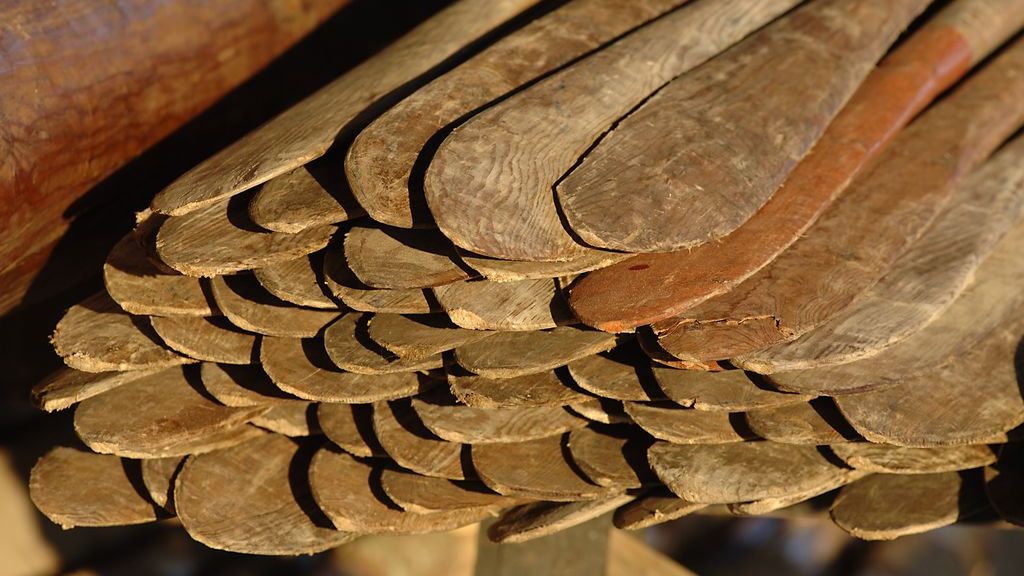It’s a rare occurrence: a ship from Denmark’s past sees the light of day, after hundreds of years on the sea floor. This week, maritime archaeologists from the Viking Ship Museum are undertaking the delicate work of raising the remains of the newly discovered medieval ship, which for the past three weeks, has been excavated in the waters off Masnedø in Storstrømmen (the strait between the islands of Falster and Sjælland).
The maritime archaeologists found the ship in June in connection with the investigation of areas of archaeological interest that lie in the path of the new Storstrøm Bridge, which the Road Directorate are developing as a replacement for the old bridge, which was built in 1937. That the ship should be found right there, illustrates how Storstrømmen has, at all times, been a nodal point for sea-traffic:
“Storstrømmen has been a vital route way ever since the first people came to these parts, but it has also been a colossal hindrance in terms of movement between the two land masses. So it’s fantastic that the construction of this bridge in particular can provide us with new insights into how people solved this problem almost a thousand years ago: how do you best get from one coast to the other?”, says Frederik Hyttel, team leader for Maritime Archaeology at the Viking Ship Museum.
After the discovery of the interesting shipwreck, the surviving parts of the ship were secured using sand bags, so they could lie protected until the team of maritime archaeologists from Denmark, Sweden, Croatia, Hungary and Italy could begin the complicated underwater excavation. The excavation is now concluded and the complex task of raising all the ship’s parts can begin.
A rare task – raising an archaeological ship-find
The ship lies on the south side of Kalverev, an area of shallow water southwest of Masnedø. In connection with the construction of the bridge, a working channel must be dug through the area, making it impossible to preserve the ship in situ, which is the most common method used when shipwrecks are found in Danish waters.
“It’s a very rare occurrence, that we get job like this one”, tells Museum Curator Mikkel Haugstrup Thomsen. “The most normal practice would be to secure the shipwreck in situ, but in this instance it’s not an option. We have therefore ensured the recovery of as much information as possible by undertaking a full excavation, carried out by maritime archaeologists, and now we’ve reached the point where we can begin raising the many pieces of the ship”.
The surviving parts of the ship are 10m in length and ca. 2.5m wide. Six planks remain on the port side and two on the starboard side. The ship was built using the clinker-building technique, where the planks overlap each other, so that the ship’s side isn’t smooth but has a series of ‘steps’ on its outer surface.
The Road Directorate, who as developers of the Storstrøm Bridge are responsible for the cost of the excavation, are also interested in the find.
“We’re very happy that the work on the Storstrøm Bridge can help to cast light on an otherwise unknown area, like medieval ships. At the same time, the comprehensive work being carried out by the maritime archaeologists right now ensures that we won’t happen upon other important finds such as this one, when we’re in full swing with building the bridge” explains Jochen Meyer, who is responsible for the Road Directorate’s collaboration with Danish Museums in connection with all construction projects.
The development of ship technology – a new piece of the puzzle
Archaeologists still don’t know exactly how large the original ship was, but a more detailed analysis of the ship’s parts should be able to yield more information. One thing they can be sure of now, however, is the fact that the ship has parallels both looking back to the ships of the Viking Age and also forwards to the vessels of the high Middle Ages.
The ship’s date has already been established by dendrochronologically analysing samples taken from the ship’s planks during the initial investigations back in June. The analysis of the timber’s annual rings has shown that the ship was built sometime between ca. 1250-1265 AD.
Ship-finds from the 13th century that are as well preserved as the wreck from Kalverev Syd are rare, and therefore of great importance in terms of our understanding of the development of the Nordic ship after the Viking Age.
During the 13th and 14th centuries, a gradual change takes place in terms of shipbuilding, where the light and elegant vessel design of the Viking Age is abandoned in favour of a desire to increase the amount of cargo on board. This led to changes in building technology and provided the opportunity to utilise materials, which couldn’t previously be used in shipbuilding.
The excavation of the wreck from Kalverev Syd and the forthcoming detailed documentation and analysis of the ship’s parts will be a significant contribution to our understanding of a period in the history of Nordic shipbuilding, which was defined by marked technological and social changes.
» <link internal-link internal link in current>The archaeologists’ work can be followed on the Viking Ship Museum’s website
Info on the ship:
- The ship has been dendrochronologically dated to ca. 1250-65 AD.
- The on-going investigations would suggest that it is a smaller section of a larger vessel.
- The wrecked fragments are ca. 10m in length and 2.5m wide. These constitute a fragment of a wreck extending from the sixth – unattached – strake on the port side, over the keel to the second strake on the starboard side.
- The keel is t-shaped in section, with ‘wings’ where the garboards were fastened.
- 15 frame stations have been identified, of which four floor timbers are still lying in their original position, even though they are no longer fastened.
- The floor timbers are ca. 10-12cm wide and slightly higher than they are broad.
- As far as can be established so far, the planks are up to 30cm wide and a good 2cm thick, where they are best preserved.
- The planks are fastened to each other and the keel with the use of rivets with round shanks and square-shaped roves, while the frames are fastened using treenails.
- So far, only one loose artefact has been found: a bone from a bird lying up against floor timber 6. Quantities of nuts, wood shavings and potentially other items have also been identified, stuck to the tar on the inner side of the ship.
- When raising the ship parts, they are lifted one at a time, after which they are packed individually and transported to the Viking Ship Museum in Roskilde.
- At the Viking Ship Museum, the timbers will be 3D scanned, so all information can be saved for more detailed analysis.
Info on the bridge project:
- The Road Directorate are constructing the new Storstrøm Bridge, which will be Denmark’s third biggest bridge. The bridge is of great significance regionally and is also an important element in the rail connection between Copenhagen and Germany. This connection will be strengthened in the coming years with the establishment of the new rail line between Copenhagen-Ringsted and the forthcoming construction of the Femern Belt Connection.
- The entire Storstrøm project will cost 4.2 billion DKK.



